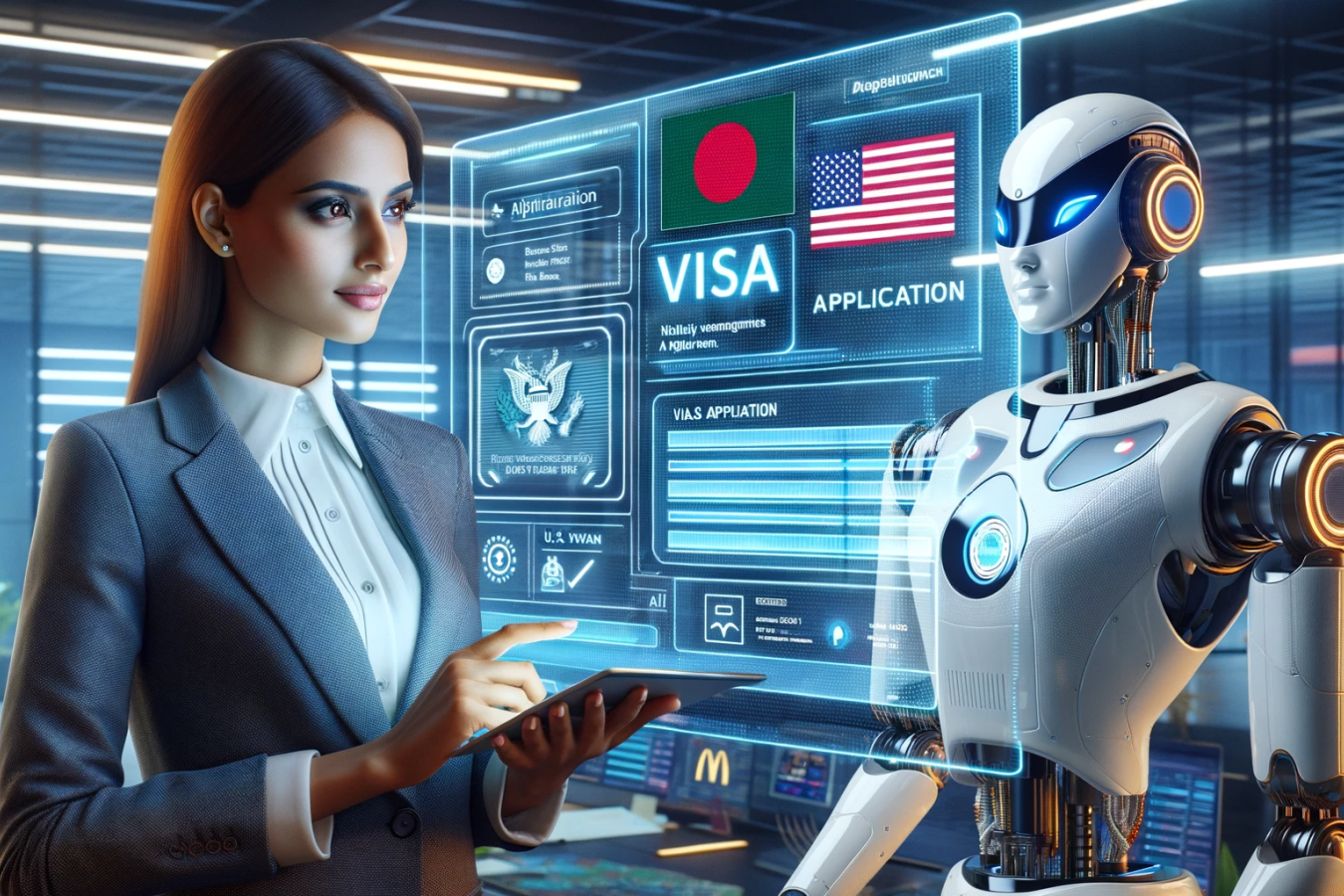Support migrant centric journalism today and donate

By Sanwar Ali:
In an era where digitization is widespread, the U.S. Department of State is also taking steps to modernise the US visa processing system. With the successful completion of a pilot program, the department is ready to change the face of visa processing by introducing U.S. paperless visas. This move is set to take the traditional visa stamping process to a completely digital platform, making it more efficient and user-friendly.
Program Overview
The concept of a paperless visa refers to a digital system where visa information is stored in a secure database instead of being physically stamped or pasted in passports. The U.S. recently conducted a pilot program for this concept at the Dublin embassy, marking a significant milestone in the realm of visa processing.
Development Process
The U.S. Department of State spearheaded the implementation of the pilot program under the guidance of key figures like Julie Stufft, Deputy Assistant Secretary for Visa Services. The department's commitment to modernizing visa processing services led to the successful execution of the pilot program.
Advantages of the Paperless System
The shift to the paperless system comes with numerous benefits. Firstly, it reduces the processing time, making it a more efficient method. Secondly, it's more cost-effective as it eliminates the need for physical resources such as paper and ink. Moreover, it reduces the risk of passports getting damaged or lost during the visa stamping process. Furthermore, the digital system is environmentally friendly, contributing to the global push towards sustainability.
Technical Aspects
The paperless visa system is backed by robust technology, ensuring the secure storage of visa information. The use of a secure database guarantees the safety of personal data, making the system reliable for applicants. The advanced technology also allows the electronic verification of visa statuses, simplifying the process for immigration officials.
Implementation and Future Rollout
While the pilot program in Dublin has been successful, the complete rollout of the paperless visa system will take time. According to Julie Stufft, it will likely take approximately 18 months or more for the system to be implemented widely. The Department of State plans to gradually expand the program, beginning with other types of visas and eventually spreading geographically. The ultimate goal is to make the paperless visa system a standard for all U.S. visa processing.
Expert Opinions and Analysis
Experts in immigration and technology have lauded the move towards paperless visas. They believe that this change will greatly improve the efficiency of visa processing and make the process more user-friendly for applicants. Government officials have also expressed their optimism about the impact of this change on visa policies and international travel.
Comparative Global Perspective
The U.S. is not the first to implement a digital visa system, but it's certainly making strides with its paperless visa initiative. Other countries have also adopted similar measures, but the U.S. stands out with its comprehensive plan to streamline visa services and its commitment to using advanced technology to ensure a secure and efficient system.
Challenges and Solutions
During the pilot program, there were initial challenges related to integrating the new system with existing visa processing protocols. However, these were swiftly addressed through collaborative efforts between technology teams and visa processing staff. Ensuring data security and privacy was a top priority, with robust measures implemented to protect sensitive applicant information.
Future Implications
The introduction of the U.S. paperless visa marks a significant step in the modernization of visa processing. It embodies the government's commitment to leveraging technology to enhance public services. As the pilot program evolves into a widespread practice, it's expected to pave the way for more innovations in visa processing.
Conclusion
The future of global travel and visa trends is set to change dramatically with the integration of digital solutions like the U.S. paperless visa. As we move forward, we can expect to see more countries adopting similar measures, leading to a more streamlined and efficient global visa processing system.
workpermit.com helps with US Work Visa: L1, H1B, E2, and O1 Visas
There are various types of US visas that individuals can apply for, depending on their circumstances. Some of the most common employment-based visas include:
L1 visa: This visa is for intracompany transferees who work in managerial or executive positions or have specialized knowledge.
H1B visa: This visa is for specialty occupations that require theoretical or technical expertise in specialized fields.
E2 visa: This visa is for investors who have made a significant investment in a US business and, management or essential skills employees. Only certain nationalities can apply.
O1 visa: This visa is for individuals with extraordinary abilities in the arts, sciences, education, business, or athletics.
Workpermit.com is a specialist visa services firm with over thirty years of experience dealing with visa applications. For more information and advice, please contact us on 0344 991 9222 or at london@workpermit.com(link sends e-mail)





















